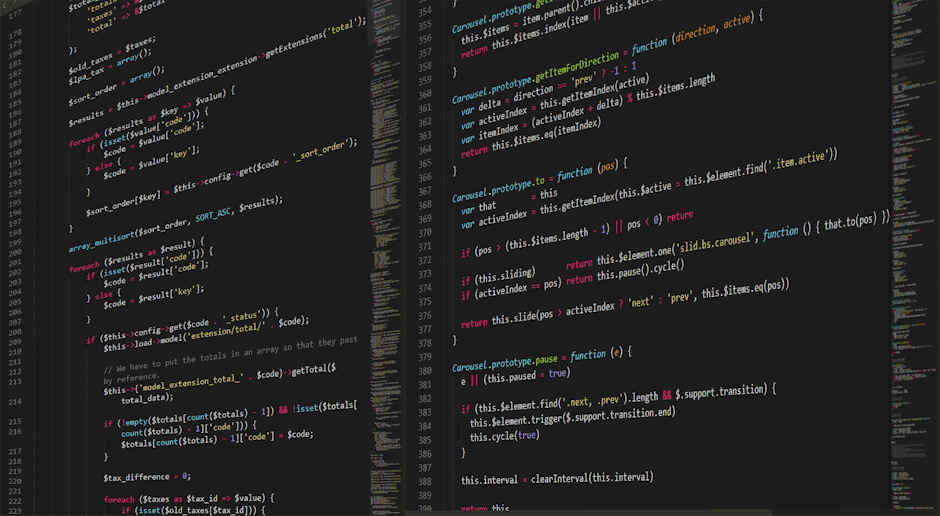
It’s 2025, and online advertising, well, it’s still a big deal, kind of a constant hum in the background of just about everything we do online, isn’t it? You know, you go to Google, you type in what you’re looking for – say, “best non-slip cat bowls for messy eaters” – and right there, usually at the very top, sometimes even a couple of spots down, are those little bits of text that say “Ad” next to them. Those, my friends, they are the bread and butter, the main thing really, of what we call Google PPC. It’s a whole system, honestly, designed so that businesses, big or small, can get their products or services right in front of your eyes, or rather, the eyes of people who are searching for exactly what they’re selling. It’s not just a simple banner on a website, nope, it’s considered to be a much more direct approach, especially since it targets your searches so specifically, often meaning you are seeing something that you probably want to click on, or at least you’re curious about. The whole idea is pretty neat when you think about it: pay only when someone actually takes that step and clicks on your advertisement. It means, generally speaking, that your advertising money, it goes where the interest is, where there’s a real person showing a tiny bit of actual curiosity. And understanding how all this gets put together, how it works under the hood so to speak, that’s a pretty useful bit of information for anyone who’s looking to get their business more visible on the world’s most popular search engine. Because, like, we all use Google, right? It’s where a lot of people go first, to find things, to look stuff up, to buy whatever they need. So getting your message there, that’s really something, a real opportunity, you could say.
So, What Even Is Google PPC, Really?
Okay, so let’s get down to brass tacks about what this Google PPC thing is, at its core. You know how when you type something into Google, you get those search results, like, a whole page full of them? Well, Google PPC, or Google Pay-Per-Click, is the method by which some of those results, the ones marked with “Ad,” get there. It’s not magic, though sometimes it feels a bit like it when you see just the right ad at just the right time. The basic notion, it’s not too wild to grasp: advertisers, that’s the companies or individuals wanting to show their stuff, they sort of bid on certain keywords, those are the words or phrases people type into the Google search bar. So, if you’re a company selling those amazing non-slip cat bowls, you might bid on “cat bowls non-slip” or “best food dishes for cats” or “pussy cat dinnerware that stays put.” When someone searches one of those terms, if your bid and your ad quality are good enough, your ad might just show up. And the “Pay-Per-Click” part, that’s just what it sounds like. You don’t pay for your ad to appear. Nope, you only shell out cash when someone actually clicks on your ad and goes to your website. It’s a pretty distinct way of doing things, compared to old-school advertising where you paid just for your ad to be in a newspaper or on TV, no matter if anyone looked at it or not. This means, typically, that every dollar you put into it, it’s got a clearer connection to someone actually showing interest in what you’re offering, which is, honestly, a pretty comforting thought for folks putting their money on the line. It’s considered to be a direct line to potential customers, which is what lots of businesses are looking for, usually.
Getting Your Ads Out There: The Google Auction Thing
Now, how does Google decide whose ad shows up when, say, three different cat bowl sellers are all bidding on “non-slip cat bowls”? It isn’t just about who’s got the deepest pockets, which is something a lot of people, they often get wrong about it. It’s more of an auction, a really quick one, that happens every single time someone types something into Google. What happens is, Google takes your bid, which is the maximum you’re willing to pay per click, and then it combines that with something called your Quality Score. This Quality Score, it’s super important, and we’ll talk more about it later, but for now, just know it’s Google’s way of guessing how useful and relevant your ad is going to be to the person searching. So, Google multiplies your maximum bid by your Quality Score, and that gives you what’s generally known as your Ad Rank. The ads with the highest Ad Rank, they’re the ones that get the top spots, often, or at least better positions.
So, to run through it again:
1. Someone searches for something. Like “indestructible cat toys 2025.”
2. Google looks at all the advertisers who are trying to show ads for that specific search term, or something really similar.
3. An auction takes place, instantly. For each ad, Google figures out its Ad Rank.
4. The ads with good enough Ad Ranks get shown. Usually, higher ranks get higher positions.
It’s a really fast process, happens in milliseconds, which is kind of wild to think about. Your bid tells Google how much you value a click, but your Quality Score, that’s Google’s opinion of how good your ad is for the user. So, you can bid a little less, but if your ad is super relevant and helpful, you might still win out over someone who bid more but has a not-so-great ad. Keywords are really the key, obviously; they’re the connectors. You pick keywords that you think people will type, then you write ad copy, which is the actual text of your ad, that speaks to those keywords. And then, when someone clicks, they land on a specific page on your website, normally called a landing page, that should ideally be about what they clicked on. If everything aligns, if the ad matches the search and the page matches the ad, Google usually gives your Quality Score a bump up, making it easier for you to appear again. It’s quite the system, considered to be.
Keeping Your Ads Ticking: Why Stuff Like Quality Score Matters, a Lot
Alright, so we just touched on Quality Score, and seriously, it’s one of those bits of Google PPC that you really, truly need to get your head around, because it makes such a difference to how much you pay and how well your ads perform. Think of Quality Score as Google’s way of making sure the ads people see are, well, good ads, not just junk. It’s a score out of 10, often, and Google calculates it based on a few different things that, when all put together, sort of paint a picture of how useful your ad is going to be for someone searching.
Here are the main components that Google usually considers for your Quality Score:
Expected Click-Through Rate (CTR): This is Google’s guess, their prediction really, of how likely your ad is to get clicked when it shows up. If lots of people click your ad when it appears, Google takes that as a sign that your ad is relevant and interesting.
Ad Relevance: Does your ad, the text of it, match the keywords you’re bidding on and what the person is searching for? If you’re bidding on “comfy dog beds” but your ad is talking about cat trees, that’s not very relevant, is it? Google wants to see a close connection.
Landing Page Experience: After someone clicks your ad, where do they go? Your landing page needs to be relevant to the ad, easy to use, loads fast, and provides the information the person was likely looking for. A clunky, slow, or confusing page, that will typically ding your Quality Score.
Why does Google care about this so much? Well, for a few reasons. One, Google wants its users to have a good experience. If every ad they see is crummy and irrelevant, people might stop using Google for searching, and that’s not good for Google. Two, a better user experience means people are more likely to click ads, which means Google makes more money in the long run. And for you, the advertiser, a higher Quality Score is considered to be a really big deal because it can actually make your clicks cheaper. Seriously! If your Quality Score is high, Google might show your ad higher up for a lower bid than someone else with a low Quality Score. It’s like a reward for being good and helpful. So, spending time making sure your ads are relevant, your keywords are spot-on, and your landing pages are top-notch, that’s not just busy work. It’s a direct way to save money and get more clicks for your advertising budget, normally. You want that Quality Score to be doing its best, always.
Different Ways Google PPC Can Work For You (Beyond Just Search)
Now, when most people think of Google PPC, they usually, typically, think of those ads that pop up right in the search results – those bits of text with “Ad” next to them. And that’s a huge part of it, that’s what’s called the Google Search Network. But Google’s advertising capabilities, they are much broader than just that. It’s not just about words on a page anymore; it’s about putting your message out there in different forms, in front of the right eyeballs, wherever those eyeballs happen to be online.
There’s also the Google Display Network. This is where your ads are more visual – banners, images, even little animated bits – and they show up on literally millions of other websites, apps, and even some Google-owned properties like Gmail and YouTube. Instead of waiting for someone to search for something specific, Display Network ads kind of find people based on their interests, or what websites they visit, or even their demographics. So, if someone is reading a blog about cat health, a company selling organic cat food could show them a visual ad there. It’s a way to keep your brand in people’s minds, even when they’re not actively searching.
And then, naturally, there are YouTube Ads. YouTube is also owned by Google, so it’s a big playground for advertisers. You know those ads that play before, during, or after a video you’re trying to watch? Or those little banner ads that appear on the side or bottom of a video? Those are YouTube ads. They’re super good for reaching people with video content, obviously, which can be much more engaging than just text or even a static image.
Don’t forget Google Shopping Ads, either. If you search for a product, say “best robot vacuum 2025,” often you’ll see a row of products with pictures, prices, and store names right at the top of the search results page. Those are Shopping ads, and they’re incredibly effective for e-commerce businesses because they show the actual product right away, making it super easy for people to compare and click straight to a purchase.
The real trick with all these different ad types is the targeting. Google has a lot of information, like, a lot of information, about what people like, where they go online, their age, stuff like that. Advertisers can use this information, responsibly, generally, to make sure their ads are seen by the people who are most likely to be interested. This is why you sometimes feel like Google is reading your mind – it’s not magic, it’s just very sophisticated targeting systems at work, making sure the ads are put in front of the right person at, normally, the right time. So it’s considered to be a really big toolbox, honestly, for getting your message to your potential customers.
Making Sense of Your Campaigns: Tweak It and See!
So, you’ve set up your Google PPC ads, they’re running, and you’re getting some clicks. Great! But the thing about Google PPC, it is not just a “set it and forget it” kind of operation, not if you want to get the best out of it, anyway. It’s really more like a garden, where you plant seeds, but then you need to water them, pull the weeds, maybe add some fertilizer, and sometimes prune things back so other stuff can grow better. You’ve always gotta be looking at what’s happening, seeing what’s working, and what’s not, so you can make things better.
Google provides a bunch of tools, called reports generally, that let you see exactly what’s going on with your ads. You can see how many people saw your ad (impressions), how many people clicked it (clicks), how much you spent, and importantly, if you’ve set it up, how many people actually did what you wanted them to do on your website, like fill out a form or buy something (conversions). These numbers, these metrics, they tell a story. If an ad is getting tons of impressions but hardly any clicks, maybe the ad copy isn’t that great, or it’s showing up for the wrong searches. If people are clicking but not converting, then perhaps the landing page needs some work, or maybe the price isn’t right, you know?
The really good PPC advertisers, they’re always, pretty much always, checking these reports. They’re making little adjustments, or sometimes big ones, based on what the data is showing them. They might:
Adjust their bids: Maybe they’re paying too much for a click that isn’t leading to a sale, or maybe they need to bid a bit more to get a better position for a really profitable keyword.
Tweak their keywords: Sometimes you find out people are searching for slightly different things than you expected, or that some keywords are just too expensive and don’t bring in good business.
Rewrite their ad copy: A slightly different headline or description could make a huge difference in how many people click.
Improve their landing pages: Making sure the page is super clear, easy to navigate, and persuasive, that’s a constant job.
It’s all part of a cycle, really. You plan, you launch, you monitor, and then you optimize. And then you monitor some more, and optimize some more. This constant tweaking, it’s considered to be the actual secret sauce to making Google PPC work really well, because the online world, it’s always changing, and what worked last month might not be the absolute best strategy today. You gotta keep on top of it, generally.
So, when you boil it all down for 2025, Google PPC is still, very much, a massively powerful way for businesses, of pretty much any size, to get noticed online, to put their message right in front of people who are looking for it. It’s not a set-it-and-forget-it deal, no, it demands a bit of attention and, normally, some regular adjusting. But for those who take the time to understand the moving parts – the keywords, the bidding, that all-important Quality Score, and the different ad formats – it is a pathway that can bring some genuinely good results. And that, really, is what it’s all about, isn’t it? Getting your stuff seen by the right folks, when they’re ready to see it, and maybe, just maybe, turn them into customers.
FAQ About How Google PPC Works
1. How much does Google PPC normally cost?
Honestly, there isn’t one fixed price tag for Google PPC; it varies a whole lot. What you spend often depends on how competitive your industry is, what keywords you’re targeting, and how high your bids are. You set your own budget, typically a daily or monthly limit, so you never spend more than you’re comfortable with. Some businesses might spend just a few hundred dollars a month, while bigger ones could spend tens of thousands. It’s considered to be flexible, which is good.
2. How quickly can I see results from Google PPC?
One of the nice things about Google PPC is that you can often see results pretty quickly. Once your campaigns are set up and approved, your ads can start showing up in search results almost immediately. You’ll usually start getting clicks and impressions within hours or a day, and if everything is aligned, you could potentially see sales or leads coming in within the first few days or weeks. It’s not an overnight miracle, but it’s generally faster than, say, waiting for SEO to kick in.
3. What’s a “good” Quality Score, really?
A “good” Quality Score is usually anything around a 7 or higher, out of 10. If your ads, keywords, and landing pages are doing a good job of being relevant and helpful to searchers, Google will typically reward you with a higher score. Getting a 7 or above often means you’re doing well and could be paying less per click than competitors with lower scores. Lower scores mean there’s definitely room for improvement.
4. Is Google PPC just for big companies, or small businesses too?
No, definitely not just for big companies! Google PPC is actually really great for small businesses, too. Because you can set specific budgets and target very niche keywords or local areas, it allows smaller operations to compete with larger ones. You don’t need a massive advertising budget to get started; many small businesses begin with modest spending and scale up as they see results. It’s accessible, generally speaking, to almost anyone with an online presence.
5. How does Google decide who wins the ad auction?
Google decides who wins the ad auction based on something called Ad Rank. Your Ad Rank is calculated by taking your maximum bid (the most you’re willing to pay per click) and multiplying it by your Quality Score (Google’s assessment of your ad’s relevance and user experience). The ads with the highest Ad Rank get the better positions on the search results page. So, it’s not just about money; a really good, relevant ad can beat a higher bid if its Quality Score is high enough, which is something important to remember.






